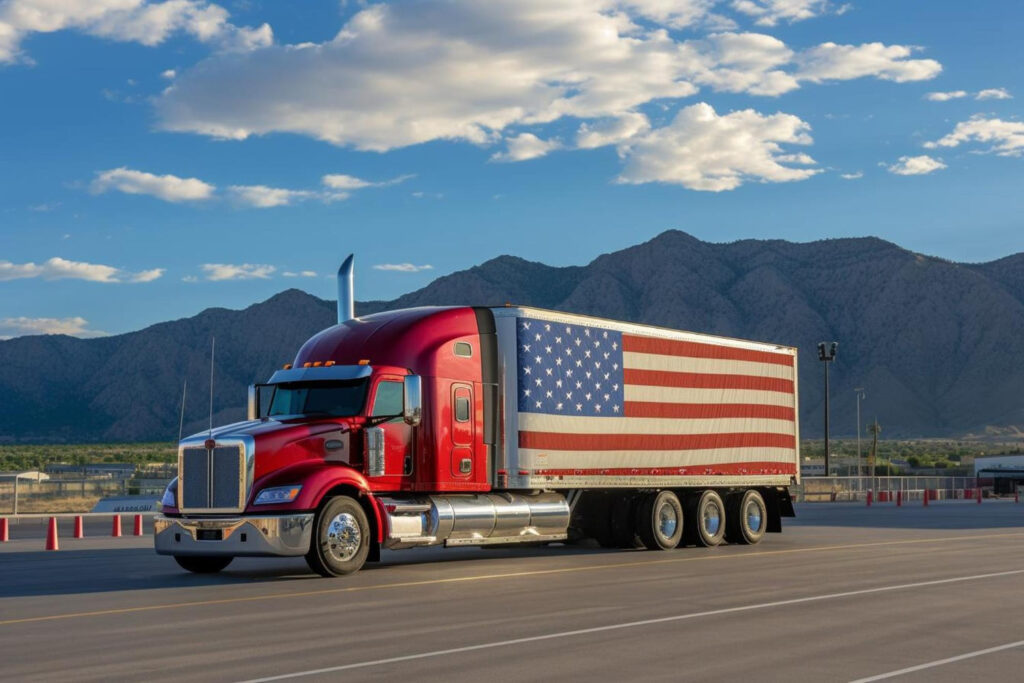The World of Truckers in the U.S.: The Backbone of the National Economy
The trucking industry in the United States constitutes a vital resource for the country’s economy, being responsible for transporting the vast majority of the products and goods that sustain both daily life and commercial activities. With a workforce of approximately 3.5 million truckers, this essential occupation ensures the constant flow of supply chains, linking producers, distributors, and consumers across the national territory.
Although the image of the trucker suggests freedom on the open road, the reality of this occupation frequently entails long hours behind the wheel and prolonged periods away from home and family. These workers spend countless hours traveling the interconnected highways, facing inclement weather and the pressure of delivery deadlines. Despite these sacrifices, the profession of trucking presents an attractive economic reward, with salaries that generally range between $40,000 and $80,000 per year. Those with more experience, specializing in certain loads (such as hazardous materials or refrigerated transport), and those who undertake long-haul trips can earn more than $100,000 annually, making this occupation an interesting professional option with opportunities for financial expansion. In addition to the base salary, many workers benefit from additional benefits that include medical insurance, pension plans, and paid time off, further increasing the attractiveness of this profession.

Image: Although the image of the trucker suggests freedom on the open road, the reality of this occupation frequently entails long hours behind the wheel and prolonged periods away from home and family. [hobbysoft.us]
The Road to the Wheel: Requirements and Training
The path to becoming a professional trucker in the U.S. requires meeting certain criteria and passing various tests. In general, it is necessary to be at least 21 years old to be able to travel between states (although some states allow in-state licenses from the age of 18). A key element in this process is attending a certified truck driving school, where future drivers acquire the essential theoretical and practical knowledge to operate large commercial vehicles safely and efficiently. The curriculum of these institutions covers topics such as federal transportation regulations, basic vehicle maintenance, defensive driving techniques, fatigue management, and procedures for loading and unloading goods.
Once the training has been completed, the next step is to pass a strict exam to obtain the Commercial Driver’s License (CDL). This exam is divided into a theoretical section, which measures knowledge of traffic laws and specific regulations for commercial vehicles, and a practical section, where the skill to maneuver the truck in various traffic situations and when parking is evaluated. Obtaining the CDL is an essential achievement that validates the driver’s aptitude to operate heavy vehicles legally and safely.

Image: The path to becoming a professional trucker in the U.S. requires meeting certain criteria and passing various tests. In general, it is necessary to be at least 21 years old to be able to travel between states (although some states allow in-state licenses from the age of 18). [hobbysoft.us]
The demanding nature of the work is also reflected in the regulations on hours of service. To ensure safety on the roads and prevent driver fatigue, federal regulations limit the maximum number of hours a trucker can be behind the wheel in a given period, as well as establish mandatory rest periods. Following these regulations is vital for drivers and transportation companies.
Challenges and Opportunities on the Road
Despite its relevance, the trucking sector in the United States faces significant challenges. One of the most urgent is the prolonged shortage of qualified drivers. The aging of the workforce, coupled with the demands of the trucker lifestyle, has created a mismatch between the need for transportation and the availability of professionals. This scarcity can cause delays in deliveries and create tensions in supply chains.

Image: Despite its relevance, the trucking sector in the United States faces significant challenges. One of the most urgent is the prolonged shortage of qualified drivers. [hobbysoft.us]
Another challenge inherent in the profession is the danger of truck accidents. Given the size and weight of these vehicles, collisions can result in serious consequences, both for drivers and other road users. Driver fatigue, poor weather conditions, heavy traffic, and human errors are elements that can increase the likelihood of these accidents.
However, the industry also offers significant opportunities. Many are attracted by the chance to travel and discover various regions of the country. The autonomy that drivers have on the road once they have loaded and secured their merchandise is also a motivator. Likewise, the economic security the profession provides, especially for those who build a long-term career, is a considerable benefit. The growing demand for products and goods ensures that truckers will continue to be needed shortly.
Despite the obstacles that involve long hours
The realm of truck transportation in the United States encompasses much more than driving a large vehicle. It is a crucial job that sustains the country’s economy, requiring commitment, skill, and resilience from those who practice it. Despite the obstacles that involve long hours, separation from home, and the dangers of the road, this profession offers attractive remuneration, opportunities for personal growth, and the gratification of being a key part of the machinery of the country’s functioning. With the constant increase in the need for products, the role of truckers in the U.S. will continue to be essential, ensuring that goods reach their destination and keeping the engine of the economy running.
—–
EMTS Parts & Services, Inc.
& hobbysoft.us

